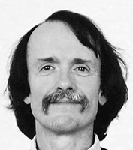New Leadership for Two SIAM Journals
July 17, 2000

New SICON editor-in-chief Steven Marcus, who follows Jack Lagnese in the position, has been a member of the SICON editorial board since 1990. He is also an editor for the SIAM Advances in Design and Control book series. A professor in the Department of Electrical and Computer Engineering and the Institute for Systems Research at the University of Maryland, Marcus is also a member of the university's Faculty of Applied Mathematics.
In 2000, two of the journals have had a change in leadership: C.T. (Tim) Kelley of North Carolina State University has succeeded Michael Overton, a professor of computer science at the Courant Institute of Mathematical Sciences, New York University, as editor-in-chief of SIAM Journal on Optimization, and Steven Marcus of the University of Maryland, College Park, is the new editor-in-chief of SIAM Journal on Control and Optimization, succeeding Jack Lagnese of Georgetown University. That the editors are leaders in their fields, respected not only for their research but also for the breadth of their perspectives, is a given. Their awareness that a good editor-in-chief must also be effective in arenas far from cutting-edge developments in the discipline comes through in the comments they made to SIAM News on the occasion of the new appointments.


Former SIOPT editor-in-chief Michael Overton (top) and his successor, Tim Kelley. Each has been a member of the journal's editorial board since 1990 (the first issue of SIOPT was published in February 1991). Overton's other SIAM editorial interests include SICON, for which he was an associate editor from 1988 to 1992, and SIAM Journal on Matrix Analysis and Applications, where he is currently an associate editor. He gave an invited talk on semidefinite programming at the most recent SIAM Conference on Optimization. Kelley, an organizer of that conference, has also been extensively involved in SIAM publications: SIAM Journal on Numerical Analysis (associate editor, 1998-2000) and the MPS-SIAM Series on Optimization; he is the author of two SIAM books, both in the Frontiers series: Iterative Methods for Linear and Nonlinear Equations (1995) and Iterative Methods for Optimization (1999).
Crediting Michael Overton for a "fantastic job" and leaving the journal "in great shape," Kelley considered the challenges he would be facing: "The journal must keep pace not only with a constant supply of interesting applications of optimization, but also with important changes in the discipline itself." SIOPT, he points out, has been the home for many of the most significant recent papers in new parts of the field, such as analysis of classical and novel direct search methods and semidefinite programming, while continuing to cover advances in both theory and classical algorithms.
"In the near future," Kelley says, "I would like to see the journal broaden its coverage of applications and of discrete optimization. I expect to make appointments to the editorial board toward these two goals. Of course, SIOPT always welcomes papers that combine advances in optimization theory or algorithms with progress in a substantial application."
"It was a great honor to be editor-in-chief of SIOPT," says Overton. "The biggest responsibility, but also the most rewarding part, was choosing appropriate editors for the board, leading people in their fields who were willing and able to make the time commitment that editorial work requires. Working with these editors was very satisfying, as was interacting with the professional staff at SIAM. During my time as editor-in-chief we moved from all paper submissions to mostly electronic submissions, and from paper-only publication to electronic-first publication."
Preferring a behind-the-scenes role (with respect to this article), Lagnese, who completed two terms as SICON's editor-in-chief, deferred to his successor in commenting on the journal. Marcus prefaced his own plans and hopes for the journal with a tribute to Lagnese, who, he says, "deserves the thanks of the research community for the magnificent job he has done. He performed the job with grace and calm, upheld the high standards of the journal, focused the editorial policy, and was always responsive to the needs of authors and of the editorial board."
SICON, Marcus says, "provides high-quality papers on the mathematics and applications of control theory and dynamic optimization theory. The journal is very healthy: Submissions are up and the quality of the papers is high."
Electronic submissions to SICON, he says, began last year, and this is helping to decrease the reviewing time. In fact, more than 50% of the submissions are now electronic. With electronic publication, a paper that has been accepted for publication will be copy edited and published electronically within approximately six months of the acceptance date.
Marcus's goals include maintenance of "the high quality of the journal, both in terms of its editorial board and the quality of the papers published in areas traditionally covered by the journal." In addition, he tells SIAM News, "I would like to see the journal occasionally publish authoritative surveys of important subject areas in control theory and optimization whose level of maturity permits a clear and unified exposition. Although such articles have long been permitted under current editorial policy, in fact very few articles of this type have been submitted, and I believe that the journal needs to be more aggressive in soliciting appropriate manuscripts. I would also like the journal to occasionally publish papers that are in innovative new areas although somewhat outside the usual scope of the journal, but that nonetheless would be of interest to the journal's readership."
On behalf of all authors, readers, and subscribers, SIAM wishes the new editors-in-chief well as they strive to uphold the standards set by their predecessors.

